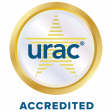Understanding APTC
The Advance Premium Tax Credit (APTC) is a tax credit that was introduced as part of the Affordable Care Act (ACA) to help make healthcare coverage more affordable for Americans. The APTC is available to individuals and families who purchase health insurance through the Health Insurance Marketplace. In this blog post, we will explore what APTC is, how it works, and its impact on the healthcare system.
What is APTC?
APTC is a tax credit that helps lower the cost of health insurance premiums for people who meet certain income requirements. The credit is based on a person’s projected income for the year, and it can be applied to the monthly insurance premium to reduce the amount owed. The amount of the credit is based on a sliding scale that ranges from 2% to 9.83% of a person’s income, with lower-income individuals and families receiving a higher percentage of the credit.
How does APTC work?
To receive APTC, an individual must purchase health insurance through the Health Insurance Marketplace. When an individual enrolls in a health insurance plan, they can choose to have the APTC paid directly to their insurance company to lower their monthly premium. Alternatively, they can choose to pay the full premium amount out-of-pocket and receive the tax credit when they file their federal income tax return for the year.
To be eligible for APTC, an individual must meet certain income requirements. In 2022, the income threshold for APTC eligibility is $51,040 for a single person and $104,800 for a family of four. Individuals who earn less than this amount may be eligible for Medicaid or the Children’s Health Insurance Program (CHIP).
What is the impact of APTC on the healthcare system?
APTC has had a significant impact on the healthcare system since its introduction. According to a report by the Centers for Medicare and Medicaid Services (CMS), over 11 million people enrolled in health insurance plans through the Health Insurance Marketplace for 2021, with 87% of those enrollees receiving APTC. The same report found that the average APTC amount per enrollee was $491 per month.
APTC has made healthcare coverage more affordable for millions of Americans, especially those with lower incomes. A study by the Kaiser Family Foundation found that, on average, APTC recipients paid only $117 per month for their health insurance premiums in 2020, compared to $491 per month for those who did not receive the credit. The study also found that APTC recipients were more likely to have a primary care provider and receive preventive care, which can lead to better health outcomes.
Conclusion
The Advance Premium Tax Credit (APTC) is a tax credit that helps make healthcare coverage more affordable for Americans. APTC is available to individuals and families who purchase health insurance through the Health Insurance Marketplace and meet certain income requirements. APTC has had a significant impact on the healthcare system, making healthcare coverage more affordable for millions of Americans and improving access to preventive care. As such, APTC remains an important component of the Affordable Care Act and a critical tool in the effort to provide affordable, high-quality healthcare to all Americans.
References:
- Centers for Medicare and Medicaid Services. (2021). Effectuated Enrollment Snapshot: February 2021. https://www.cms.gov/files/document/2021-06-10-2021-effectuated-enrollment-snapshot-february-2021.pdf
- Kaiser Family Foundation. (2021). Health Insurance Marketplaces 2021 Open Enrollment Period: Final Enrollment Report. https://www.kff.org/report-section/health-insurance-marketplaces-2021-open-enrollment-period-final-enrollment-report/
- Internal Revenue Service. (2022). Premium Tax






